Fintech PR
Yangtze River Delta advances high-quality integrated development
BEIJING, Dec. 1, 2023 /PRNewswire/ — A report from People’s Daily: The Yangtze River Delta is one of the most economically vibrant, open and innovative regions in China. It encompasses four major economic engines – Shanghai, Jiangsu, Zhejiang and Anhui.
Shanghai serves as a frontier of openness and a prime innovation hub. Jiangsu province features strong real economy. Zhejiang province boasts a developed private economy. Anhui province possesses a rather comprehensive industrial system and rich scientific and technological resources…
On Nov. 5, 2018, Chinese President Xi Jinping announced at the opening ceremony of the first China International Import Expo that China would support integrated development of the Yangtze River Delta region, and make it a national strategy.
Over the past five years, the region’s night light development index jumped 57.24 percent, and the number of cities with a GDP of over 1 trillion yuan ($141.29 billion) increased to eight, or around 1/3 of the total in China. The integrated development strategy has brought tremendous changes to the Yangtze River Delta, writing a new chapter on Chinese modernization.
“In the past, when we encountered technical difficulties, we had to find solutions and resources by ourselves. Now we can directly post requests on the platform,” said Yang Weizhong, executive chairman of Shanghai Different Advanced Material Co., Ltd. (Shanghai Different), referring to an open competition platform for selecting the best candidates to undertake research projects launched by Shanghai’s Pudong New Area earlier this year.
According to him, developing high-performance hybrid fiber materials had been a headache bothering the company for years. Immediately following the launch of the platform, Shanghai Different posted its technical requests, which were soon picked up and solved by Jiangsu Gem Advanced Fiber Materials.
“Integrated development truly brings innovation resources to one focal point, opening up new possibilities,” Yang noted.
Innovation possesses the core position in China’s modernization drive. In recent years, the synergetic innovation index in the Yangtze River Delta region has been growing at 9.47 percent annually on average, and the region has shared 23 major scientific research facilities and more than 40,000 large scientific instruments. High-caliber technological supplies are effectively bolstering the high-quality economic development of the region.
On May 28 this year, C919, China’s self-developed large passenger aircraft, completed its first commercial flight, which was a testimony to the manufacturing muscle of the Yangtze River Delta. About 10 percent of the aircraft’s parts, 50 percent of its aluminum materials, and 50 percent of composite structural components were manufactured in Zhenjiang, Jiangsu province.
It marked a close collaboration and integration of industrial chain resources among Yangtze River Delta cities, including Shanghai, Hefei, Hangzhou, Suzhou and Zhenjiang, which realized the dream of the Chinese people to make a large passenger jet of their own.
Under the promotion by Commercial Aircraft Corporation of China, C919’s main manufacturer, around 1,000 enterprises in the nine cities and districts along the G60 Science and Innovation Corridor have been incorporated into the aircraft manufacturing chain.
In Changzhou, a series of innovative industrial clusters have sprouted up around the new energy industry chain, with production value already surpassing 500 billion yuan.
In Jiaxing, the Yangtze Delta Region Institute of Tsinghua University, Zhejiang and the Zhejiang Institute of Advanced Technology under the Chinese Academy of Sciences are thriving; top-tier scientific innovation platforms – China Nanhu Academy of Electronics and Information Technology, Nanhu Laboratory, and Institute of Flexible Electronics Technology of Tsinghua University, Zhejiang – have also been launched.
In Hefei, Chinese new energy vehicle giant BYD has built a new manufacturing base, while establishing supporting facilities for key components like power batteries, battery materials, high-voltage devices and wire harnesses in Bengbu, Chuzhou and Fuyang, to form a comprehensive industry chain.
“These epitomize the modernized industrial landscape in the Yangtze River Delta, the unique strengths bred by integrated development,” remarked BYD chairman and president Wang Chuanfu.
The ever-strengthening innovation and industrial chains come from the continuous unleashing of the talent chain. As the Yangtze River Delta’s primary attraction for talents and highland for innovation, Shanghai welcomes both domestic and foreign talents, while also encouraging various talents to fully realize their potential in the region.
Jiangsu, Zhejiang, and Anhui provinces have established incubators and empowerment centers in Shanghai to further tap the metropolitan’s advantages in talent attraction and innovation resources.
“Previously, for foreigners in China to work in the securities industry, they had to ‘follow local customs’ and sit China’s securities qualification exam – a tall task halting many international finance talents,” said Park Pu, Chairman of J.P. Morgan Securities (China).
“Now Pudong has set up an international finance qualification accreditation catalog system, creating favorable conditions to draw global experts,” Pu added.
Integrated development is not a simple equation of combining strengths, but rather realizing complementary advantages and building synergy to form new advantages of high-quality development.
As the strategy of integrated development moves ahead, the four major economic engines of the Yangtze River Delta will work together even more closely to propel high-quality development.
View original content:https://www.prnewswire.co.uk/news-releases/yangtze-river-delta-advances-high-quality-integrated-development-302003688.html

Fintech PR
Enabling Regenerative Agriculture for Independent Smallholders in Indonesia: The BIPOSC Project, in Collaboration with Musim Mas, L3F, SNV Indonesia, and ICRAF

JAKARTA, Indonesia, Oct. 18, 2024 /PRNewswire/ — Musim Mas Group, the Livelihoods Fund for Family Farming (L3F), SNV Indonesia, and World Agroforestry (ICRAF) are collaborating to improve the knowledge and capacity of independent oil palm smallholders through the Biodiverse & Inclusive Palm Oil Supply Chain (BIPOSC) project.
The project began in 2021 and takes a long-term approach to sustain a deforestation-free supply chain, regenerate degraded land, restore local biodiversity, and improve the livelihoods of independent smallholder farmers in Labuhanbatu, North Sumatra. BIPOSC will achieve this through implementing regenerative agriculture, locally adapted agroforestry models, capacity-building for sustainable businesses, and others.
The independent palm smallholders taking part previously received complementary training from Musim Mas. Following the training, these smallholders formed a smallholder’s association, Labuhanbatu Independent Oil Palm Smallholders Association (APSKS LB), North Sumatra. Musim Mas encourages smallholders to form associations to get better access to resources and obtain certification by the Roundtable on Sustainable Palm Oil (RSPO) and Indonesian Sustainable Palm Oil (ISPO).
“Musim Mas has long saw that smallholders are key to achieving palm oil sustainability, and that’s why we lead Indonesia’s most extensive smallholder program. We believe that the way forward is to collaborate with more partners to achieve a wider impact. With our BIPOSC partners, we hope to advance the skills and knowledge of smallholders through regenerative agriculture and related techniques. Regenerative agriculture and agroforestry have the potential to help smallholders be part of a sustainable palm oil supply chain. It could help them develop alternative sources of income, especially during the replanting period where their palm oil crops are unproductive, typically for three years,” said Rob Nicholls, General Manager, Projects & Programs, Musim Mas Group.
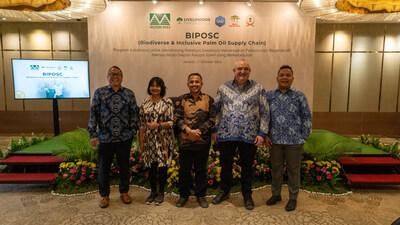
In the face of climate change and threatened biodiversity, regenerative agriculture can play a role for small farms because it maintains soil health, prevents erosion and water runoff, and can potentially reduce greenhouse gas emissions and nitrogen leakage.
“As a global development partner organization, SNV aims to support Indonesia in achieving its Sustainable Development Goals (SDGs). To achieve this, we need to implement effective and impactful programs to transform agricultural and food systems, energy, and water. In the BIPOSC program, we promote a comprehensive regenerative agriculture and agroforestry model to maintain soil fertility and biodiversity, providing maximum benefits for farmers’ livelihoods and economy,” said Rizki Pandu Permana, Country Director of SNV Indonesia.
The key regenerative agriculture techniques taught include the application of bio-input, mulching to protect topsoil, planting cover crops, integrated pest management that reduces the need for chemical pesticides, and application of compost that reduces the amount of chemical fertilizers needed. To date, 1,032 independent smallholders received training and implement these techniques on their farms, representing a total land with a total area of 1,063.68 hectares. The project trained 25 village facilitators to provide hands-on assistance to smallholders, and seven demo plots established as pilot areas and learning facilities for regenerative agriculture.
“When I visited palm oil smallholders a few years ago in the area, their biggest concern was access to more fertilizers. While fertilizers play a key role in boosting yields, there was a noticeable gap in understanding how to protect the soil from long-term degradation. Smallholders needed more knowledge about maintaining soil health, preserving soil structure, and other critical factors. This is exactly what the BIPOSC project aimed to address, and we’re pleased to see that the farmers involved are now reporting not only higher yields but also healthier soils on their plots,” said Bernard Giraud, President & Co-Founder, Livelihoods.
The projectalso looks into capacity-building. In addition to home composting, the project enabled the local farmer association, APSKS LB, to develop and manage a composting unit with a capacity of 100-150 tons/month. Producing compost at scale with inputs from nearby mills and farmer plots, the unit offers compost to member farmers at half of typical market prices. In 2023, its first year of operation, the unit produced 588 tons of compost, and generated a profit of IDR 421 million. The project partners believe it is a model that can be replicated elsewhere.
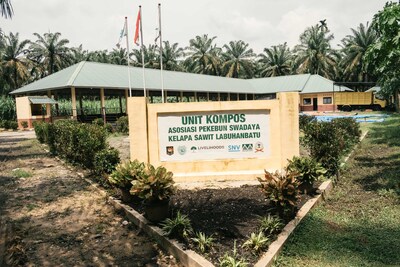
“One of the most impactful outcomes of this project for smallholders is the Composting Unit as the business model around it. It enables smallholders to obtain compost affordably, and the profits are shared among member farmers. This is a practical solution to promote the adoption of composting, and all ASPKS-LB smallholders are now using compost in their plots,” said Syahrianto, Chairman of the Labuanbatu Independent Oil Palm Smallholders Association.
As of 2023, independent smallholders manage about 41% of oil palm planted areas in Indonesia, representing 6.94 million hectares. This figure is expected to increase to 60% by 2030, making projects like BIPOSC critical in shaping the future of sustainable palm oil production.
Devane Sharma
[email protected]
Photo – https://mma.prnewswire.com/media/2533466/DSCF9193.jpg
Photo – https://mma.prnewswire.com/media/2533468/DSC07760.jpg
Photo – https://mma.prnewswire.com/media/2533467/DSCF0748.jpg

Fintech PR
BRI Partners with Nium to Expand Real-Time Cross-Border Payment Solutions
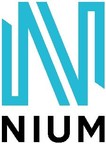
JAKARTA, Indonesia, Oct. 18, 2024 /PRNewswire/ — Nium, the leading global infrastructure for real-time cross-border payments, is thrilled to announce a partnership with Bank Rakyat Indonesia (BRI) to provide Indonesian customers with real-time international money transfer capabilities. This collaboration aims to enhance the cross-border offerings for BRI’s individual and corporate customers, delivering more accessible and cost-effective financial services across Indonesia.
This partnership empowers more than 150 million BRI account holders, including those in remote regions of Indonesia, to access modern, real-time cross-border payment services. The offering includes a variety of real-time payment mechanisms, supporting bank account destinations, a global electronic card network, and digital wallets. These innovations are closely aligned with BRI’s ongoing mission to provide affordable and customer-focused financial products, particularly for traditionally underserved communities.
BRI’s Corporate Secretary, Agustya Hendy Bernadi, emphasized BRI’s dedication to constantly improving customer convenience through innovations in its global network and cross-border transaction services. “This collaboration reflects BRI’s continuous efforts to enhance productivity and efficiency by expanding its digital payment channel network to meet the growing demand for global transactions,” he said. Agustya added that the partnership with Nium aligns perfectly with BRI’s vision to be Southeast Asia’s most valuable banking group and a champion of financial inclusion by 2025. “With Nium’s global transaction network, BRI strengthens the digitalization of its business processes and enhances retail banking capabilities in line with our 2025 strategic vision.”
Anupam Pahuja, General Manager and Executive Vice President for Asia Pacific, Middle East, and Africa at Nium, shared his excitement about the partnership, highlighting BRI’s extensive presence across Indonesia’s 17,000 islands. “By integrating Nium’s advanced technology into BRI’s platform, we are dedicated to providing BRI’s customers, no matter where they are, with access to exceptional financial services. This partnership will remove the risks associated with cash handling and provide faster, more cost-effective transactions—whether individuals are sending money to family members abroad or businesses are making international payments.”
Cross-border payments are projected to grow significantly in Indonesia, with a forecasted year-on-year increase of 15% through 2025, driven largely by the digital transformation in financial services (Statista, 2024).
This partnership between BRI and Nium is expected to transform the way Indonesians engage with global financial services, meeting the rising demand for modern payment infrastructure and enhancing the overall experience for BRI’s customers in their international transactions.
About Nium
Nium, the leading global infrastructure for real-time cross-border payments, was founded on the mission to deliver the global payments infrastructure of tomorrow, today. With the onset of the global economy, its payments infrastructure is shaping how banks, fintechs, and businesses everywhere collect, convert, and disburse funds instantly across borders. Its payout network supports 100 currencies and spans 220+ markets, 100 of which in real-time. Funds can be disbursed to accounts, wallets, and cards and collected locally in 40 markets. Nium’s growing card issuance business is already available in 34 countries. Nium holds regulatory licenses and authorizations in more than 40 countries, enabling seamless onboarding, rapid integration, and compliance – independent of geography. The company is co-headquartered in San Francisco and Singapore.
Logo – https://mma.prnewswire.com/media/1678669/4973639/Nium_Logo.jpg
![]() View original content:https://www.prnewswire.co.uk/news-releases/bri-partners-with-nium-to-expand-real-time-cross-border-payment-solutions-302279138.html
View original content:https://www.prnewswire.co.uk/news-releases/bri-partners-with-nium-to-expand-real-time-cross-border-payment-solutions-302279138.html

Fintech PR
Grexie Signchain Launches on November 1st, 2024: Enabling Smart Contract Developers to Bring Off-Chain Data On-Chain with Seamless Gas-Paid Signing
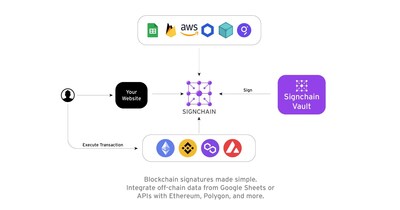
Grexie Signchain enables developers to sign off-chain data into smart contracts, with self-hosted or secure vault signer wallet management.
MANCHESTER, England, Oct. 17, 2024 /PRNewswire/ — Grexie Limited proudly announces the launch of its innovative smart contract solution, Signchain, on November 1st, 2024. Designed specifically for developers, Signchain introduces a powerful way to bring off-chain data on-chain through user-paid gas fees and secure signing of data into smart contract methods using its extendable smart contract, Signable.
In the growing landscape of blockchain technology, securely managing off-chain data and integrating it into on-chain smart contracts has posed significant challenges for developers. Signchain eliminates these hurdles by offering a robust, gas-efficient system for signing and authenticating data in real-time.
Key Features of Signchain:
1. Seamless Off-Chain to On-Chain Data Integration
Signchain enables developers to securely bring off-chain data on-chain by signing it directly into smart contract methods through user-paid gas fees. This integration ensures that data authenticity is preserved, and its entry into the blockchain remains tamper-proof, streamlining processes for industries relying on real-world data verification. Signchain also supports integration with Google Sheets, AWS, and Firebase, making it easy to pull data from popular off-chain data sources.
2. Extendable Smart Contract – Signable
The core of Signchain’s technology is its extendable smart contract, Signable, which allows developers to customize and build upon existing smart contracts. With Signable, developers can easily implement contract signatures for any data type, offering flexibility across industries from finance to logistics and beyond.
3. Signer Wallet Management
Signchain offers comprehensive signer wallet management as part of its service, empowering developers to manage and authenticate signers effectively. Wallets can either be self-hosted using Signchain’s Docker container for those who prefer their own infrastructure, or they can leverage Signchain’s network of secure vaults for maximum security.
4. Self-Hosted or Managed Service
For developers who want full control of their infrastructure, Signchain provides a self-hosted option via Docker containers, allowing them to deploy the platform on their own servers. Alternatively, developers can opt to use Signchain’s secure vault network, offering a hassle-free solution with enterprise-grade security and wallet management.
5. User-Paid Gas Fees
By integrating a user-paid gas fee model, Signchain allows users to cover the costs of signing and authenticating their data, ensuring the signing process is efficient and doesn’t overburden developers with additional expenses. This makes Signchain an ideal solution for dApps and platforms handling high transaction volumes.
6. Google Sheets, AWS, Firebase Integration with Serverless Model
Signchain supports integration with Google Sheets, AWS, and Firebase in a serverless model, powered by a hosted Sign In With Ethereum (SIWE) implementation provided by Signchain’s API. Developers can simply connect their Google Sheets and configure the contract parameters associated with each column. Signchain will automatically look up the user’s wallet address in the spreadsheet, sign the transaction data, and execute it in the blockchain along with any user-supplied parameters. This creates an easy, efficient way to manage data inputs from off-chain sources without heavy infrastructure setup.
Revolutionizing Smart Contract Workflows
With Signchain, developers now have the tools to handle the complexities of integrating off-chain data into smart contracts. The extendable nature of Signable offers flexibility, allowing developers to cater to various use cases, whether it’s automating financial transactions, supply chain data, or verifying legal agreements.
Tim Behrsin, CEO of Grexie Limited, said, “Signchain is more than just a signing solution—it’s a platform that empowers developers to securely integrate off-chain data into their smart contracts with minimal effort. The flexibility of Signable and our focus on signer wallet management offers developers control and security at every stage of the process.”
Why Signchain Matters
Signchain addresses critical challenges faced by developers, particularly those dealing with off-chain data. By signing data into smart contracts and enabling user-paid gas fees, the platform significantly reduces friction in managing secure, scalable smart contracts. Whether developers need to manage high volumes of data transactions or create bespoke smart contracts, Signchain offers a scalable and secure solution.
In industries like DeFi, real estate, and supply chain management, data integrity and security are paramount. Signchain’s secure vault network and customizable signing workflows allow businesses to handle sensitive information with confidence.
Launch Event and Future Developments
The official launch of Signchain will take place on November 1st, 2024, alongside a virtual event. The event will showcase live demonstrations of Signable, with detailed walkthroughs of the Docker-based self-hosted solution and signer wallet management features. Attendees will also get an exclusive preview of future enhancements, including multi-signature workflows and advanced blockchain network integrations.
About Signchain
Signchain is a cutting-edge platform developed by Grexie Limited, based in Manchester, Cheshire, United Kingdom. Signchain simplifies smart contract development by offering a secure, scalable, and customizable solution for signing and authenticating off-chain data on-chain. Developers can either self-host the solution using Signchain’s Docker container or rely on the network’s secure vault infrastructure. With an emphasis on security, flexibility, and developer experience, Signchain is set to transform how smart contracts handle off-chain data.
For more information, visit signchain.net.
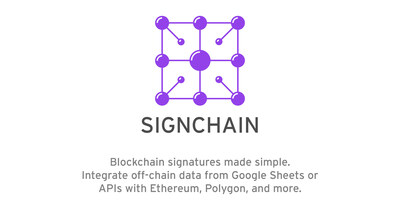
Logo – https://mma.prnewswire.com/media/2533672/Signchain_Logo.jpg
Photo – https://mma.prnewswire.com/media/2533843/Signchain_flow.jpg
PDF – https://mma.prnewswire.com/media/2533539/Signchain_Whitepaper.pdf
SOURCE Grexie Limited

-

 Fintech PR7 days ago
Fintech PR7 days agoBybit Doubles Down on Rewards for Late Entrants of WSOT 2024 With New 100,000 Prize Pool
-

 Fintech PR7 days ago
Fintech PR7 days agoVantage Markets Adds Another Feather to its Cap: Wins Best Forex Affiliate Program at Global Brand Awards 2024
-

 Fintech PR7 days ago
Fintech PR7 days agoRSM US and RSM UK pursue transatlantic merger to strengthen global client offering and deliver long-term growth
-

 Fintech PR7 days ago
Fintech PR7 days agoBybit x Block Scholes Derivatives Report Uncovers BTC Call Option Boom Amidst Election Uncertainty
-

 Fintech PR7 days ago
Fintech PR7 days agoOCI to Close Divestment of Controlling Stake in Fertiglobe
-

 Fintech PR7 days ago
Fintech PR7 days agoBitget Launches Telegram App Centre, Featuring Over 600 TON Trending Mini-Apps
-

 Fintech PR7 days ago
Fintech PR7 days agoBingX Launches Telegram Mini App for Seamless Copy Trading
-

 Fintech PR6 days ago
Fintech PR6 days agoStatement regarding revised possible cash offer from ABC Technologies Inc. and extension of Rule 2.6 deadline




